9mm vs. 40 vs. 45: The Great Handgun Caliber Debate Solved
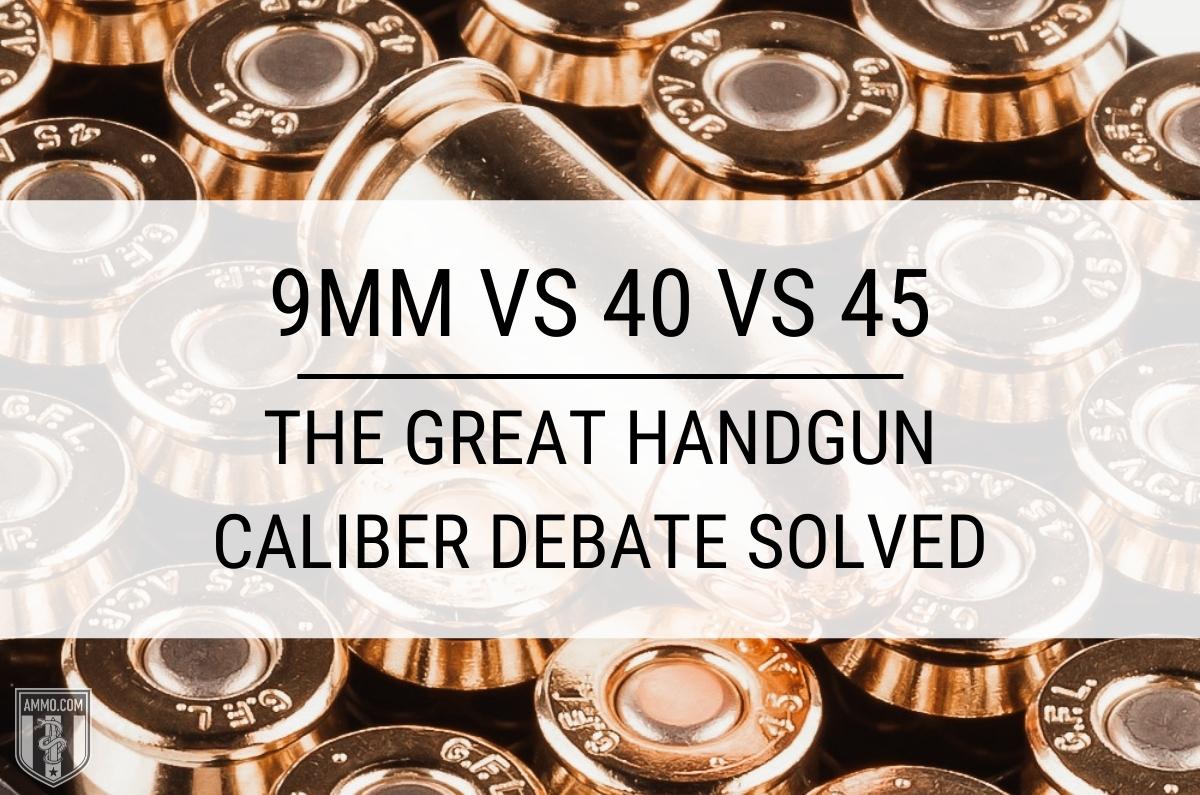 Deciding on the caliber of your self-defense or concealed carry handgun can be a challenging task if you haven’t done your research. Although there are many options on the market like 10mm Auto and 357 SIG, the three most popular pistol calibers are 9mm Luger, 40 S&W, and 45 ACP.
Deciding on the caliber of your self-defense or concealed carry handgun can be a challenging task if you haven’t done your research. Although there are many options on the market like 10mm Auto and 357 SIG, the three most popular pistol calibers are 9mm Luger, 40 S&W, and 45 ACP.
It’s not an insignificant choice, as anyone purchasing a handgun wants the best caliber for personal defense since this is what most pistols and revolvers are used for.
Sadly, there is a lot of misinformation about the effectiveness of handgun ammo that might sway a new gun owner into a caliber that they end up hating. This is where we come in!
Let’s separate fact from fiction concerning stopping power for the Great Trifecta of self-defense handgun cartridges.
Spoiler Alert: The ideal caliber is the one you shoot best. Therefore, when you are ready to drop your Benjamins on a new EDC handgun, whether it be a Glock 17, Springfield XD, Sig Sauer P226, or Colt 1911, you’ll be confident that you have the best self-defense sidearm on your hip.
9mm vs 40 vs 45: A 3-Way Tug of War
When it comes to pistol calibers, the shooting community is extremely polarized when it comes to deciding which handgun cartridge is the best for personal defense.
Those entrenched in the 9mm Luger camp often beat the war drums and defend their 9mm pistols with chants of “Magazine Capacity! Less Recoil! Improved JHP 9mm loads! Better follow-up shots and shot placement!”
The 40 Smith & Wesson (S&W) crowd is cut from a different cloth as they enjoy compromise and finding a handgun caliber that’s “just right”. As the true Goldilocks of the shooting world, they enjoy their porridge in one hand and are busy cleaning their beloved polymer-framed semi-auto Glock 22 or Springfield XD in the other. They enjoy shooting a heavier bullet weight (but not too heavy), higher muzzle velocity (but not too much FPS), and stopping power that is “just right”.
And finally, we have arrived at the 45 ACP crew. Before the introduction of the reliable semi-auto handgun and their coveted Colt 1911 or Glock 21, these shooters likely brought their 44 and 357 Magnum revolvers to a gunfight. They want to shoot the heaviest bullet weight possible, with punishing muzzle energy, and terminal ballistics that would make FBI handgun analysts cry tears of joy. Purveyors of the 45 ACP throw magazine capacity to the wind, because who needs to reload when you’ve got enough stopping power to put down a bad guy in one shot (or so they claim)?
This is clearly an oversimplified (and hilarious) example of how many shooters view the debate between 9mm Luger, 40 S&W, and 45 ACP. The truth is, it’s a give-and-take equation and each handgun cartridge has its unique advantages and disadvantages. It’s like a 3-way tug of war with the coveted title of “Top Self-Defense Round” at the center.
It can be confusing comparing multiple handgun calibers at the same time. Instead, let’s quickly look at each cartridge and how they compare in their respective pairs.

40 vs 45
The comparison between 45 ACP and 40 S&W breaks down into three different criteria: recoil, muzzle velocity (fps), and to a lesser extent, magazine capacity. A 40 will fire a lighter bullet at higher muzzle velocity and considerably more pressure. This added pressure makes felt recoil from the 40 considerably snappier and more difficult to control.
On the other hand, the 45 ACP is a lower pressure round and shooters describe the recoil as a push and not a snap. The 45 fires heavier bullets at lower fps allowing for better control of the handgun and faster follow-up shots.
Magazine capacity for 45 ACP in a standard Glock 21 magazine is 13 rounds, while the Glock 22 magazine enjoys 15 rounds of 40 S&W. Two bullets are not a huge difference, but in a longer gunfight, it could make a difference.
To read our full review of 40 S&W vs 45 ACP CLICK HERE.
9mm vs 45
9mm Luger vs 45 ACP is perhaps the quintessential handgun caliber debate that has been raging since World War II. This debate has only been exacerbated when the U.S. Army turned in their 45 ACP rounds and Colt 1911 sidearms for the Beretta M9 and 9mm Luger in the 1980s. The key points of contention in the 9 vs 45 debate are bullet weight, recoil, stopping power, and magazine capacity.
The 9mm cartridge produces less recoil as it fires a lighter bullet than the 45. However, a 9mm bullet will have significantly higher fps than a 45 which can lead to over-penetration when using FMJ ammo (which is why you should always use JHP ammo for self-defense when utilizing 9mm handguns). Recoil is lighter for the 9mm, allowing for faster follow-up shots.

However, the 45 ACP and its heavier bullet are long thought to have more stopping power as it creates a larger permanent wound channel. As the 9mm is smaller, it has a higher magazine capacity. A standard Glock 17 magazine can hold 17 rounds of 9mm ammunition while a Glock 21 magazine will only hold 13 rounds of 45.
To read our full review of 9mm Luger vs 45 ACP CLICK HERE.
9mm vs 40
The 9mm Luger vs 40 S&W debate has been raging since 1990 when the 40 first hit gun store shelves. The 40 S&W was produced by Smith & Wesson and Winchester as a direct result of the 1986 Miami Shootout. The 40 is a shorter, reduced power 10mm Auto that the FBI developed to replace their 9mm handguns and 38 Special revolvers due to inadequate stopping power of hollow-point ammo at that time. After adoption by the FBI, numerous police departments across the U.S. picked up the 40 as their duty ammo.
The main points of contention in the 9mm vs 40 debate are recoil and stopping power. The 9mm cartridge has about 25% less recoil than the 40 S&W, which allows for faster follow-up shots and better shot placement. The 40 S&W fires a larger bullet (124 gr vs 180 gr) that will theoretically create a larger permanent wound cavity and incapacitate a bad guy faster. However, hollow point technology has advanced since 1990 and JHP 9mm loads are considerably more effective, closing the gap between 9mm and 40 in terms of stopping power.
To read our full review of 9mm Luger vs 40 S&W CLICK HERE.
Stopping Power
Stopping power, or knockdown power, is one of those mystical terms that shooters like to throw around to justify their position on one caliber or another. This is one of the main talking points in the 9mm vs 40 vs 45 ACP debate, so we will spend some time discussing it here.
However, you’ll note that there is no column on the ballistics charts for stopping power, and in truth, it is a combination of several factors. Although stopping power cannot be quantified, the FBI has done their best to do it.

In 1986, 8 FBI special agents were engaged in a prolonged gunfight with two bank robbers/murderers in Miami, Florida. During the conflict, two FBI agents lost their lives, and 5 others were injured. Referred to as the 1986 Miami Shootout, it is the most studied law enforcement engagement in US history.
It was determined that the FBI agents’ 9mm ammo was ineffective at quickly neutralizing the two criminals, as both endured multiple hits and kept fighting. This led to the FBI developing the 40 S&W as well as a scoring system for grading handgun ammo.
Known as the FBI Ammunition Testing Protocol, different bullets can be evaluated in ballistics gel to determine their real-world effectiveness inside the human body.
For this comparison, we will only discuss hollow point ammo as it is what you should be loading into all of your concealed carry handguns. Hollow point bullets will expand when they encounter soft tissue, decreasing the amount of penetration and increasing the amount of damage that the bullet will cause.
FMJ ammo should not be used in your EDC pistol as a full metal jacket will not expand and likely over-penetrate through the bad guy into an innocent bystander and/or through internal walls.
The FBI standard for personal defense ammo states that a hollow point bullet should penetrate 12-18” into ballistic gel to be considered effective. Anything below 12” will likely not penetrate deep enough to damage major organs and over 18” would be considered over penetration and pass through the bad guy.
With modern hollow point bullets, self-defense JHP ammo like Speer Gold Dot, Federal HST, and Winchester PDX1 all meet this standard regardless of caliber. So, if that is the case, what is the difference between the 9mm, 40, and 45?
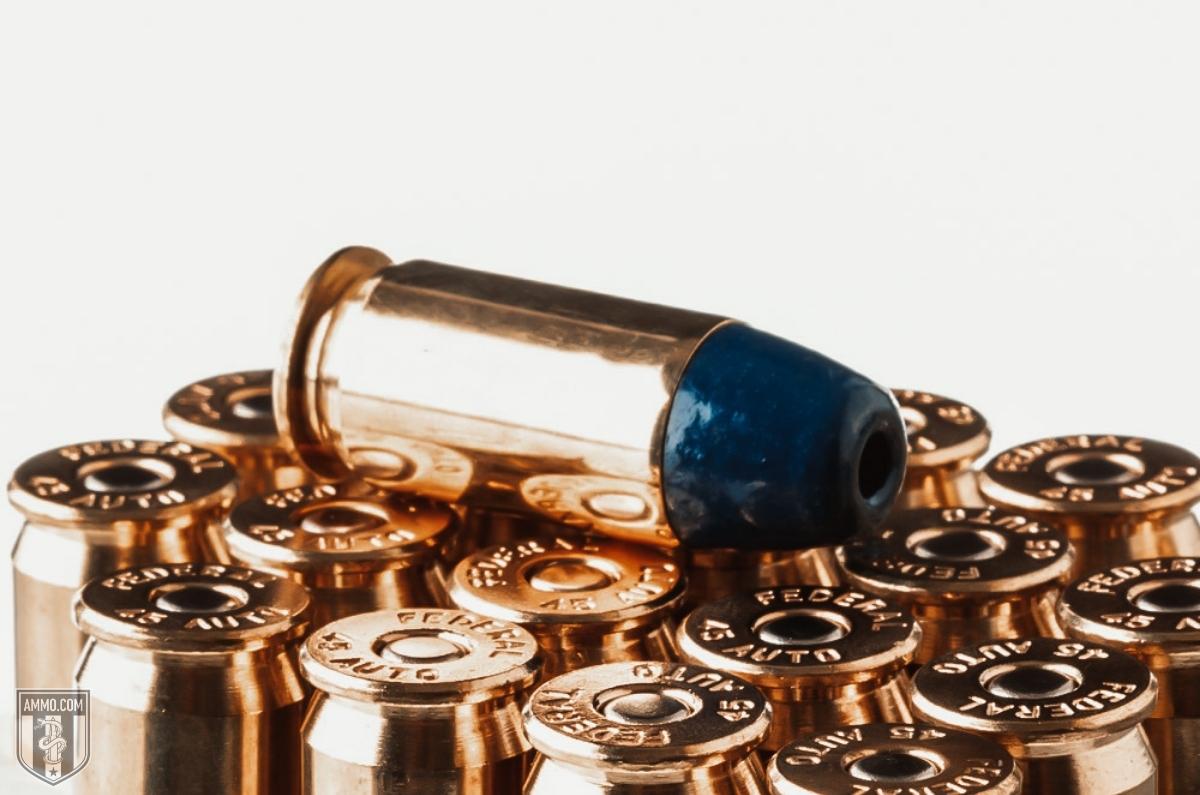
Many an internet tactical ninja will point to the differences in kinetic energy and bullet diameter between calibers and state that these make the difference. Sadly, for the armchair ballisticians, these differences are not grand enough to cause any significant terminal performance variations between 9, 40, and 45.
What then is the answer? What is the cause for some gunfights to end in one shot while others take multiple rounds? Shot placement.
The fastest and most effective way to end a gunfight is directly tied to a shooter's ability to accurately put rounds on center mass or the fatal T. Think of it this way, is a shot to the heart any more or less lethal with a 9mm compared to a 45 ACP? Furthermore, would a 40 S&W to the hand be more or less lethal than a 9mm to the bridge of the nose?
Without question, shot placement is the key to increasing your odds of survival during any self-defense situation. Therefore, the handgun cartridge with the most stopping power is one that YOU can shoot most accurately and meets the FBI’s requirements for self-defense ammo.
For Home Defense
“When seconds count, law enforcement is only minutes away.”
The national law enforcement response time is around 8 minutes. A LOT of bad things can happen in those 8 minutes before a law enforcement officer (LEO) shows up at your door! As such, one of the top reasons that handguns are purchased is for home defense.
And when it comes to home defense, my choice is the 45 ACP because I want a heavier bullet that can more likely stop an attacker or would-be home invader faster, with as few shots as possible. The Winchester Ranger-T or Speer Gold Dot JHP would be my choice of ammo for this role.
Furthermore, the 45 ACP has slightly less propensity to over-penetrate, which is a major liability issue when you live in a populated area or are a stone’s throw away from your neighbors.
When it comes to home defense handgun selection, weight is less important and I would recommend a full-size semi-auto pistol as the added weight will reduce felt recoil. A Sig Sauer P220, Ruger SR1911, or Glock 21 would fill this role perfectly.
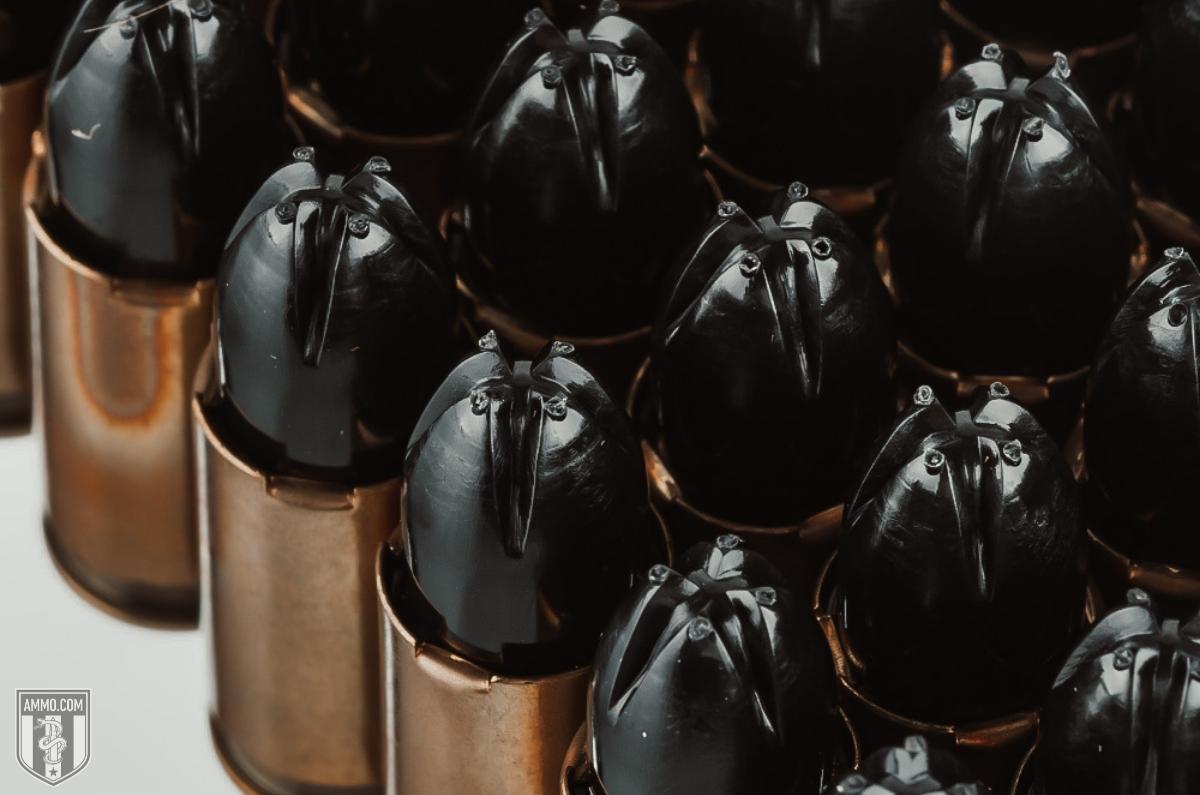
For Concealed Carry
When selecting a caliber for concealed carry, recoil, pistol weight, and magazine capacity all play a critical role. And for this reason, the 9mm round is the best choice for your EDC.
Why you are carrying concealed, pistol weight is going to become something you will be acutely aware of in short order. Larger and heavier full-sized firearms are uncomfortable to carry and require concessions in your wardrobe and carry system. On the other hand, polymer-framed sub-compact pistols are much more comfortable to concealed carry every day with minimal effort or changes to your clothing options.
However, when you reduce your overall firearm weight, you increase the amount of felt recoil you experience. That 45 ACP that was so comfortable to shoot in a 5” Government 1911 becomes a lot more difficult to control in a Glock 36. And that 40 S&W that was only slightly offensive in a Glock 22 becomes downright painful to shoot in a Glock 27.
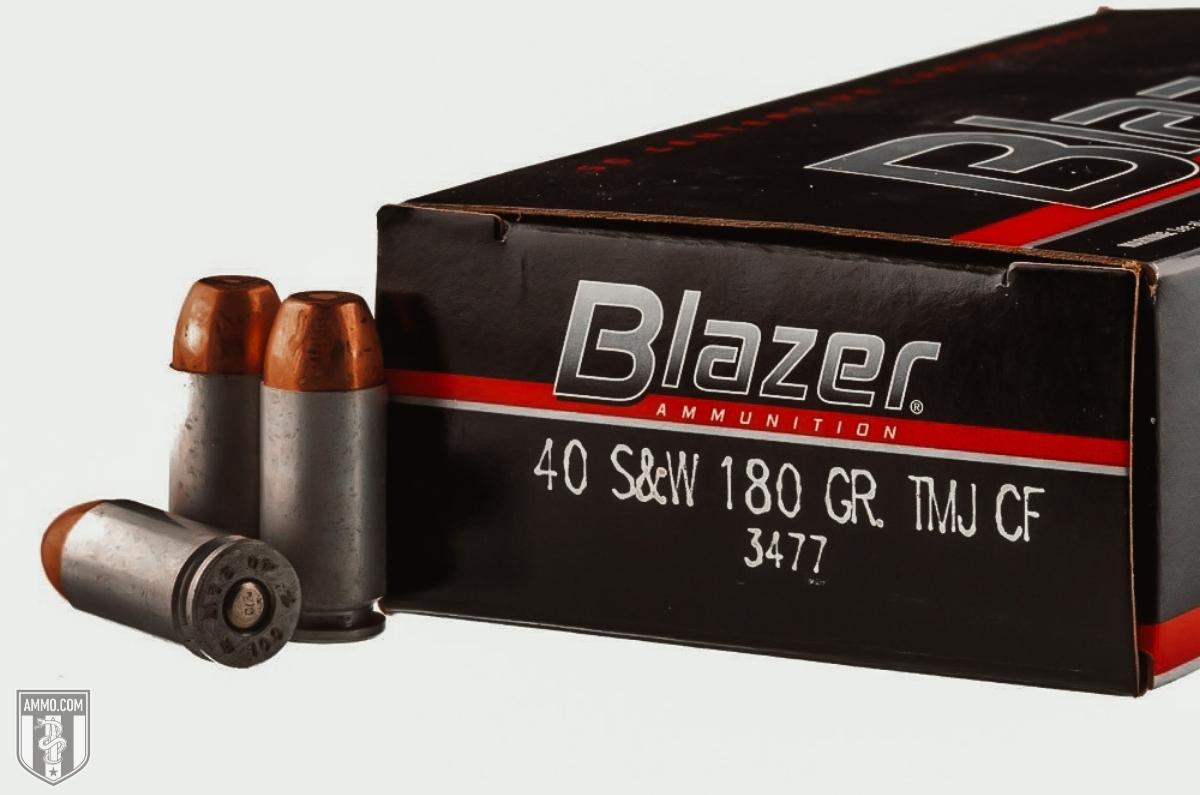
As the 9mm round will have less recoil than 40 or 45, sub-compact 9mm handguns are:
- Easier to shoot accurately
- Allow for faster follow up shots
- More comfortable to practice with
Lastly, as the 9mm bullet is smaller, it allows for more cartridges to fit into the magazine. This puts the 9mm as the better choice for concealed carry as you will have to fight less recoil and focus on the fundamentals of shooting, which in turn will allow for enhanced accuracy. As shot placement is the key to ending a gunfight, it makes sense that you select the cartridge that has the least amount of recoil and the 9mm round fits that role perfectly.
Ballistics
Our team here at Ammo.com has scoured multiple ammo manufacturers’ websites to bring you comprehensive ballistics tables to compare your favorite 45 ACP, 40 S&W, and 9mm loads. You can search for your favorite bullet weights and compare the muzzle velocity, muzzle energy, and trajectory of each.
40 Cal (S&W) Ballistics: Chart of Average 40 Cal (S&W) Ballistics
Note: This information comes from the manufacturer and is for informational purposes only. The actual ballistics obtained with your firearm can vary considerably from the advertised ballistics. Also, ballistics can vary from lot to lot with the same brand and type load.
| 40 Cal (S&W) Bullet WEIGHT | Muzzle VELOCITY (fps) | Muzzle ENERGY (ft. lbs.) | Mid-Range TRAJECTORY (in.) | Barrel Length (in.) | |||||
|---|---|---|---|---|---|---|---|---|---|
| Muzzle | 50 yds. | 100 yds. | Muzzle | 50 yds. | 100 yds. | 50 yds. | 100 yds. | ||
| 120 Grain | 1150 | n/a | n/a | 352 | n/a | n/a | n/a | n/a | n/a |
| 125 Grain | 1265 | 1102 | 998 | 444 | 337 | 276 | -3 | n/a | 4" |
| 135 Grain | 1140 | 1070 | n/a | 390 | 345 | n/a | 0.9 | n/a | 4" |
| 135 Grain Guard Dog | 1200 | 1040 | 940 | 430 | 325 | 265 | n/a | n/a | 4" |
| 155 Grain | 1140 | 1026 | 958 | 447 | 362 | 309 | 0.9 | 4.1 | 4" |
| 155 Grain JHP | 1175 | n/a | n/a | 475 | n/a | n/a | n/a | n/a | n/a |
| 165 Grain FMJ | 1050 | n/a | n/a | 404 | n/a | n/a | n/a | n/a | n/a |
| 165 Grain JHP | 1100 | n/a | n/a | 443 | n/a | n/a | n/a | n/a | n/a |
| 165 Grain | 1150 | n/a | n/a | 485 | n/a | n/a | n/a | n/a | 4" |
| 175 Grain | 1010 | 948 | 899 | 396 | 350 | 314 | n/a | n/a | 4" |
| 180 Grain FMJ | 985 | 936 | 893 | 388 | 350 | 319 | 1.4 | 5 | 4" |
| 180 Grain | 1000 | 943 | 896 | 400 | 355 | 321 | 4.52 | n/a | 4" |
| 180 Grain | 1015 | 960 | 914 | 412 | 368 | 334 | 1.3 | 4.5 | 4" |
| 155 Grain +P | 1300 | n/a | n/a | 582 | n/a | n/a | n/a | n/a | n/a |
| 180 Grain +P | 1100 | n/a | n/a | 484 | n/a | n/a | n/a | n/a | n/a |
45 ACP Ballistics
Note: This information comes from the manufacturer and is for informational purposes only. The actual ballistics obtained with your firearm can vary considerably from the advertised ballistics. Also, ballistics can vary from lot to lot with the same brand and type load.
| 45 Auto (ACP) Bullet WEIGHT | Muzzle VELOCITY (fps) | Muzzle ENERGY (ft. lbs.) | Mid-Range TRAJECTORY (in.) | Barrel Length (in.) | |||||
|---|---|---|---|---|---|---|---|---|---|
| Muzzle | 50 yds. | 100 yds. | Muzzle | 50 yds. | 100 yds. | 50 yds. | 100 yds. | ||
| 150 Grain | 1050 | n/a | n/a | 403 | n/a | n/a | n/a | n/a | n/a |
| 165 Grain | 1030 | 930 | n/a | 385 | 315 | n/a | 1.2 | n/a | 5" |
| 165 Grain Guard Dog | 1140 | 1030 | 950 | 475 | 390 | 335 | n/a | n/a | 5" |
| 185 Grain | 1000 | 940 | 890 | 410 | 360 | 325 | 1.1 | 4.9 | 5" |
| 185 Grain Match | 770 | 705 | 650 | 245 | 204 | 175 | 2 | 8.7 | 5" |
| 200 Grain | 940 | 890 | 840 | 392 | 352 | 312 | 2 | 8.6 | 5" |
| 200 Grain | 975 | 917 | 860 | 421 | 372 | 328 | 1.4 | 5 | 5" |
| 230 Grain | 830 | 800 | 675 | 355 | 325 | 300 | 1.6 | 6.8 | 5" |
| 230 Grain | 880 | 846 | 816 | 396 | 366 | 340 | 1.5 | 6.1 | 5" |
| 165 Grain +P | 1250 | n/a | n/a | 573 | n/a | n/a | n/a | n/a | n/a |
| 185 Grain +P | 1140 | 1040 | 970 | 535 | 445 | 385 | 0.9 | 4 | 5" |
| 200 Grain +P | 1055 | 982 | 925 | 494 | 428 | 380 | n/a | n/a | 5" |
9mm Ballistics
Note: This information comes from the manufacturer and is for informational purposes only. The actual ballistics obtained with your firearm can vary considerably from the advertised ballistics. Also, ballistics can vary from lot to lot with the same brand and type load.
| 9mm Bullet WEIGHT | Muzzle VELOCITY (fps) | Muzzle ENERGY (ft. lbs.) | Mid-Range TRAJECTORY (in.) | Barrel Length (in.) | |||||
|---|---|---|---|---|---|---|---|---|---|
| Muzzle | 50 yds. | 100 yds. | Muzzle | 50 yds. | 100 yds. | 50 yds. | 100 yds. | ||
| 80 Grain | 1445 | n/a | n/a | n/a | 385 | n/a | n/a | n/a | n/a |
| 88 Grain | 1500 |
1190 | 1010 | 440 | 275 | 200 | 0.6 | 3.1 | 4" |
| 90 Grain | 1360 | 1112 | 978 | 370 | 247 | 191 | n/a | n/a | 4" |
| 92 Grain | 1325 | 1117 | 991 | 359 | 255 | 201 | -3.2 | n/a | 4" |
| 95 Grain | 1300 | 1140 | 1010 | 350 | 275 | 215 | 0.8 | 3.4 | 4" |
| 100 Grain | 1180 | 1080 | n/a | 305 | 255 | n/a | 0.9 | n/a | 4" |
| 105 Grain "Guard Dog" | 1230 | 1070 | 970 | 355 | 265 | 220 | n/a | n/a | 4" |
| 115 Grain | 1155 | 1045 | 970 | 340 | 280 | 240 | 0.9 | 3.9 | 4" |
| 123 Grain | 1110 | 1030 | 970 | 340 | 290 | 260 | 1 | 4 | 4" |
| 124 Grain | 1150 | 1040 | 965 | 364 | 298 | 256 | -4.5 | n/a | 4" |
| 125 Grain | 1110 | 1030 | 970 | 340 | 290 | 260 | 1 | 4 | 4" |
| 135 Grain | 1010 | 960 | 918 | 306 | 276 | 253 | n/a | n/a | 4" |
| 140 Grain | 935 | 890 | 850 | 270 | 245 | 225 | 1.3 | 5.5 | 4" |
| 147 Grain | 990 | 940 | 900 | 320 | 290 | 265 | 1.1 | 4.9 | 4" |
| 90 Grain +P | 1475 | n/a | n/a | 437 | n/a | n/a | n/a | n/a | 4" |
| 115 Grain +P | 1250 | 1113 | 1019 | 399 | 316 | 265 | 0.8 | 3.5 | 4" |
| 124 Grain +P | 1180 | 1089 | 1021 | 384 | 327 | 287 | 0.8 | 3.8 | 4" |
Final Shots: 9mm vs 40 vs 45
The 9mm, 40 S&W, and 45 ACP are all exceptional handgun calibers that will undoubtedly get the job done in any self-defense situation provided you do your part.
The 9mm Luger and its low recoil and high magazine capacity make it an ideal concealed carry option. Lightweight 9mm pistols like the Glock 26, Beretta Nano, and Ruger LCP9 are a breeze to carry and allow you to carry more ammo compared to 40 and 45 handguns of similar size.
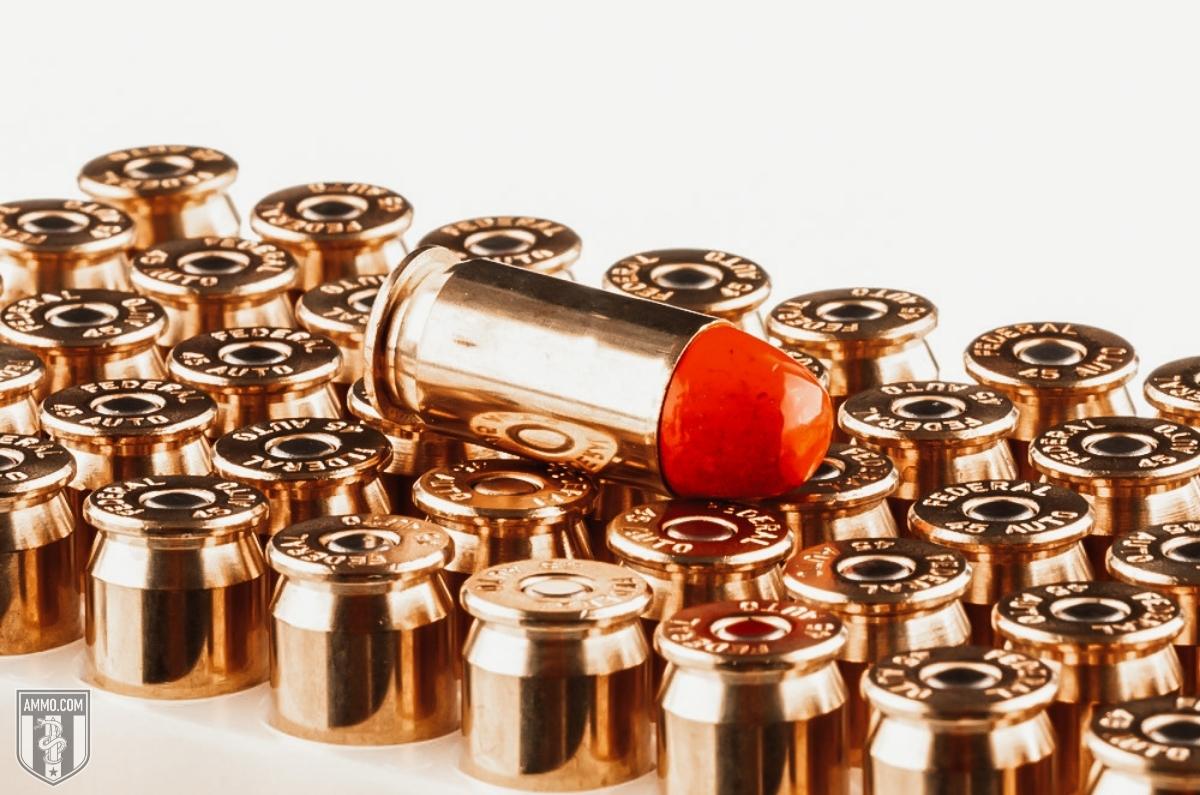
The 45 ACP is a hard-hitting pistol cartridge that was carried by the U.S. Army from WWI through Vietnam. It makes an excellent home defense choice as modern JHP 45 ammo is extremely effective at stopping any home invader without major issues of over-penetration.
And then there’s the 40 S&W, the compromise round with punishing recoil. As many law enforcement agencies and police departments are ditching the 40 and moving back to their 9mm ammunition, it brings into question what role the 40 plays in the future of shooting.
There’s no denying that the 40 was needed for a time and is an extremely effective handgun cartridge. But with advancements in hollow point technology and the addition of 115 and 124 grain 9mm +P ammo, the benefits that the 40 offered are considerably diminished.
When discussing the 40, I often refer to this quote:
“In a world of compromise, some shooters don’t!”

The 40 S&W is a compromise that doesn’t need to be made anymore. If you want low recoil and magazine capacity, then go with a 9mm. And if you want raw power and larger bullets, then the 45 is ready to tackle any bad guy in its path.
The best handgun cartridge is the one you have the most accurate shot placement with. It doesn’t matter if that’s a 9mm, 40, or 45.
Therefore, you should seize any opportunity you can to get out to the range and run some FMJ ammo through your carry gun. That way you can rest assured that if the moment arises, you’ll be able to put your preferred JHP round right where it needs to go to defend your life.
Regardless of your choice, practicing your shot placement by putting in time at the range can be expensive (but a very worthwhile investment.) Buying in bulk is always smart, make sure to check out our 9mm ammo bulk, 45 acp bulk ammo, and bulk 40 S&W ammo options.
Keep practicing your shot placement and I’ll see you on the range with my Glock 17.
Ammo Comparisons
- .308 vs 5.56
- 6.5 Creedmoor vs .308
- .300 Blackout vs .308
- .300 Win Mag vs .308
- .243 vs .308
- .308 vs .30-06
- 7mm-08 vs .308
- .270 vs .308
- 7.62x39 vs .308
- .223 vs .308
- .338 Lapua vs .308
- .380 ACP vs 9mm
- .223 vs 5.56
- .300 Blackout vs 5.56
- 9mm vs 45 ACP
- 9mm vs 40 S&W
- .357 SIG vs 9mm
- 10mm vs 9mm
- 9mm vs 9mm Luger
- .243 vs .270
- .300 Win Mag vs .30-06
- .270 vs .30-06
- .40 vs .45
- 38 Special vs 357
- 9mm vs 40 vs 45
- 5.56 vs 7.62x39
- 338 Lapua vs .30-06
- .30-30 vs .30-06
- 300 PRC vs 338 Lapua
- .30-06 vs 7mm
- 300 Win Mag vs 338 Lapua
- 300 PRC vs 300 Win Mag
- 300 WSM vs 300 Win Mag
- 338 Win Mag vs 338 Lapua
- 12 Gauge vs 20 Gauge
- 10mm vs 357 Mag
- .30-30 vs 7.62x39
- 224 Valkyrie vs 22-250
- 17 HMR vs 22 Mag
- 7.62x39 vs .300 Blackout
- 45 ACP vs 45 Auto
- 45-70 vs 30-30
- 300 Blackout vs 223
- 357 Magnum vs 9mm
- 350 Legend vs 300 Blackout
- 224 Valkyrie vs 223
- 45 ACP vs 38 Super
- 6.5 Grendel vs .308
- 17 HMR vs 22 LR
- 10 Gauge vs 12 Gauge
- 22-250 vs 223
- 45 Colt vs 45 ACP
- 350 Legend vs 30-30
- 5.7x28 vs 223
- 5.7 vs 9mm
- 5.56 vs 5.7
- 22 vs 9mm
- Buckshot vs Birdshot
- 450 Bushmaster vs 308
- 450 Bushmaster vs 223
- Buckshot vs Slug
- 6.5 Grendel vs 5.56 vs 223
- 6mm ARC vs 6.5 Grendel
- 44 vs 45
- 458 SOCOM vs 5.56
- 357 vs 44
- 32 ACP vs 380
- 300 Win Mag vs 338 Win Mag vs 338 Lapua Mag
- 450 Bushmaster vs 458 SOCOM vs 50 Beowulf
- 6mm Creedmoor vs 6.5 Creedmoor
- TMJ vs FMJ
- 44 Special Vs 44 Magnum
- 45 90 vs 45 70
- 6.8 Western vs 6.8 SPC
- 50 Beowulf vs 50 BMG
- 26 Nosler vs 6.5 PRC
- 28 Gauge vs 410
- 6.8 SPC vs 5.56
- 6.8 SPC vs 6.5 Grendel
- 6.8 Western vs 7mm Rem Mag vs .28 Nosler
- 6.8 Western vs 6.5 Creedmoor
- 22 Hornet vs 223
- 6.8 Western vs 6.5 PRC
- .410 vs 12 Gauge
- .410 vs 20 Gauge
- 22 LR vs 22 Mag
- 6mm ARC vs 243
- 7mm-08 vs 270
- 243 vs 6.5 Creedmoor
- Nickel vs Brass Casing
- 204 Ruger vs 223
- 50 Beowulf vs 5.56
- 260 Remington vs 6.5 Creedmoor
- 6mm Remington vs 243
- 28 Nosler vs 300 PRC
- 50 Beowulf vs 50 AE
- 22 Nosler vs 22-250
- 450 Marlin vs 45-70
- 300 Win Mag vs 300 Norma
- 458 SOCOM vs 300 Blackout
- 38-55 vs 45-70
- 22 Hornet vs 22 LR
- 300 Norma vs 338 Lapua
- 338 Lapua vs 50 BMG
- 28 Nosler vs 300 Win Mag
- 28 Nosler vs 6.5 Creedmoor
- 204 vs 22-250
- 458 SOCOM vs 45 70
- 44 40 vs 45 70
- 6.8 SPC vs 6.5 Creedmoor
- 450 Bushmaster vs 30-06
- 7mm Rem Mag vs 300 Win Mag
- 30 Carbine vs 223
- 25-06 vs 30-06
- 26 Nosler vs 28 Nosler
- 16ga vs 12ga
- 30 06 vs 7.62 x54R
- 9mm Makarov vs 9mm Luger
- 350 Legend vs 223
- 30 Carbine vs 5.56
- 6.5x55 vs 6.5 Creedmoor
- 6.5 Creedmoor vs 270 vs 25-06
- M193 vs M855
- 450 Bushmaster vs 458 SOCOM
- 6.5 Grendel vs 6.5 Creedmoor
- 350 Legend vs 5.56
- .277 Fury vs 6.8 SPC
- 277 Fury vs 300 Win Mag
- 10mm vs .45 ACP
- 277 Fury vs 223
- 6.8 SPC vs 300 Blackout
- 6.5 PRC vs 6.5 Creedmoor
- 277 Fury vs 308
- 277 Fury vs 6.5 Creedmoor
- 350 Legend vs 450 Bushmaster
- 277 Fury Vs 5.56 NATO
- 10mm vs 40S&W
- 32 ACP vs 9mm
- 32 Special vs 9mm
- 8.6 Blackout vs 300 Blackout
- 30 Super Carry vs. 9mm
- 5.56 vs 9mm
- .50 Action Express vs 9mm
- 7.62x25 vs. 9mm
- 10mm vs 44 Magnum
- 300 Blackout vs 300 Win Mag
- 6.5 Grendel vs 300 Blackout
- 460 Rowland vs 10mm
- 300 RUM vs 300 PRC
- 300 Norma vs 300 PRC
- 45 GAP vs 45 ACP
- 7mm PRC vs 300 Win Mag
- 300 PRC vs 6.5 Creedmoor
- 300 PRC vs 308
- 357 SIG vs 357 Mag
- 7.62x39 vs 7.62x51
- 243 Win vs 223 Rem
- 30 Nosler vs 300 PRC
- 6.5 Creedmoor vs. 30-06 Springfield
- 450 S&W vs. 44 Magnum
- 6.5 Creedmoor vs. 300 Win Mag
- 454 Cassull vs. 45-70 Govt
- 454 Cassull vs. 44 Mag
- 7.62x54r vs. 308 Winchester
- 22 ARC vs. 223 Rem
- Subsonic vs. Supersonic Ammo
